| Thursday, 27.06.2024 |
| Time |
Room 3.008 |
Room 3.010 |
| 08:15 - 09:00 |
Registration / Coffee - Cafeteria in building 8 |
| 09:00 - 09:10 |
Welcome: Stefan Keller (OST) - Room 3.008

Stefan Keller
Professor for information systems, founder and head of Geometa Labs. Keller is a member of the Swiss PGDay board and involved in various open source projects such as PostGIS and QGIS and open data initiatives, e.g. OpenStreetMap. Besides, he is generally interested in geographic data and their visualization as well as in the the integration of open source and proprietary solutions (e.g. QGIS and ArcGIS).
Professor für Informationssysteme sowie Leiter und Gründer des Geometa Labs. Ist u.a. Mitglied des Swiss PGDay OK und engagiert in verschiedenen Open Source Projekten (z.B. PostGIS und QGIS) und Open Data (v.a. OpenStreetMap). Zudem interessieren ihn allgemein Geodaten und Geovisualisierung sowie die Integration von Open Source und proprietärer Software (z.B. QGIS und ArcGIS).
Slides
Picture
|
| 09:10 - 10:00 |
Keynote: Tomas Vondra, The past and the future of the Postgres community - Room 3.008
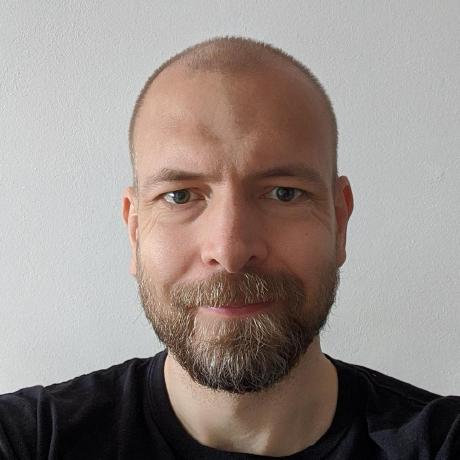
Tomas Vondra, EDB
The past and the future of the Postgres community
Let's talk about how the PostgreSQL community came to be - a little bit of history about where it comes from, where it may be heading. This history partially determines why the community is structured and organized the way it does. I want to talk about some basic strengths and weaknesses.
The goal of this talk is to give a little bit of context to users/engineers using the product but may not be very familiar with the non-technical context.
Target audience: General, Level: Beginner
I'm a long-term PostgreSQL contributor & committer, focusing on performance and query planning stuff. I also do community stuff - help organizing events and so on.
Slides
Picture
|
| 10:00 - 10:20 |
Break - Cafeteria in building 8 |
| 10:20 - 11:10 |
Gulcin Yildirim Jelinek, Bringing vectors to Postgres with pgvector
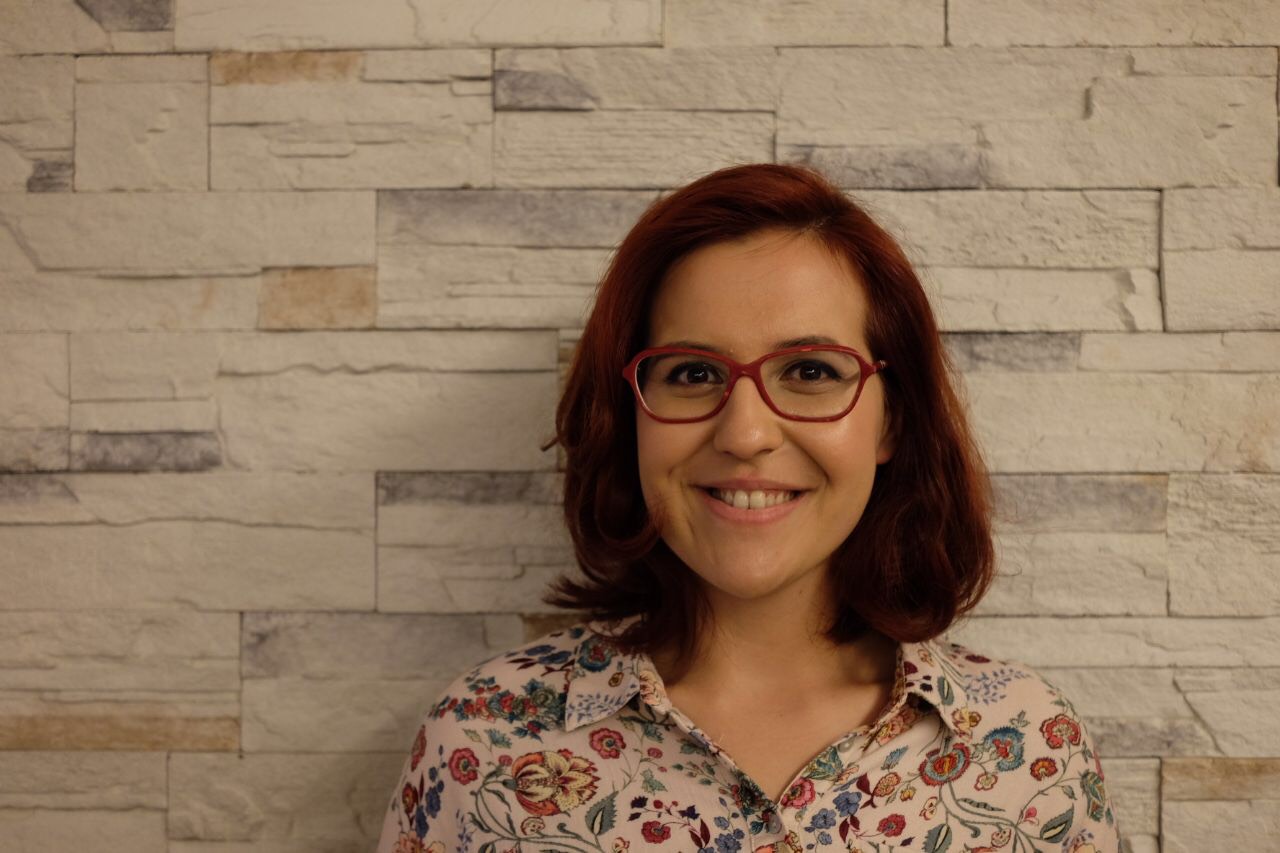
Gulcin Yildirim Jelinek, EDB
Bringing vectors to Postgres with pgvector
Postgres does not yet have native vector capabilities (as of Postgres 16) and pgvector is designed to fill this gap. You can store your vector data alongside the rest of your data in Postgres and do vector similarity search while still utilizing all the great features Postgres provides.
The pgvector extension integrates seamlessly with Postgres – allowing users to leverage its capabilities within their existing database infrastructure. This simplifies the deployment and management of AI applications, as there's no need for separate data stores or complex data transfer processes.
In this talk, we will learn how to generate and store vector embeddings in Postgres. We will discuss indexing (IVFFlat, HNSW) the embedding data and illustrate how to run a similarity query on our embeddings.
Target audience: Developer, Level: Intermediate
Gülçin started working with Postgres at a startup company in 2012 and was amazed at how good Postgres really is! Over the years, she actively contributed to the PostgreSQL community by organizing conferences, delivering talks, and engaging as a dedicated community member. In recognition of her commitment, Gülçin was elected to the PostgreSQL Europe Board in 2017. Fueled by a passion for PostgreSQL Automation and Cloud Technologies, Gülçin assumed the role of Cloud Services Manager and spearheaded Cloud Development at 2ndQuadrant, which was later acquired by EDB in 2020. Committed to fostering diversity and inclusion, she is an integral part of Postgres Women, advocating for increased representation of women in technical communities. Currently serving as a Staff Engineer at EDB, Gülçin continues to explore her interests in PostgreSQL, leveraging her expertise in Cloud Technologies. In addition to her engineering work, she recently launched a podcast, "The Builders: A Postgres Podcast"
Slides
Picture
|
Laurenz Albe, Sicherheitsattacken auf PostgreSQL

Laurenz Albe, CYBERTEC
Sicherheitsattacken auf PostgreSQL
In diesem Vortrag betrachte ich verschiedene Methoden, um unter Ausnützung unsicherer Konfiguration oder unsicherer Objektdefinitionen Schaden zu verursachen:
- Verfügbarkeit beeinträchtigen ("denial of service")
- Zugang zur Datenbank erschleichen
- Zugriff auf verbotene Daten erschleichen
- Superuser werden
Wer die Gefahren kennt, kann sich davor schützen!
Target audience: General, Level: Intermediate
PostgreSQL contributor, senior database engineer and maintainer of oracle_fdw and pgreplay
Slides
Picture
|
| 11:20 - 12:10 |
Chris Engelbert, PostgreSQL on Kubernetes: Dos and Don'ts
Chris Engelbert, simplyblock GmbH
PostgreSQL on Kubernetes: Dos and Don'ts
Running databases in containers has been the biggest anti-pattern of the last decade. The world, however, moves on and stateful container workloads become more common, and so do databases in Kubernetes. People love the additional convenience when it comes to deployment, scalability, and operation.
With PostgreSQL on its way to become the world’s most beloved database, there certainly are quite some things to keep in mind when running it on k8s. Let us evaluate the important Dos and especially the Don’ts.
Target audience: General, Level: Intermediate
Christoph Engelbert is a developer by heart, with strong bonds to the open source world. As a seasoned speaker on international conferences, he loves to share his experience and ideas, especially in the areas of scalable system architectures and back-end technologies, as well as all things programming languages.
Slides
Picture
|
Nicolas Fränkel, Die API eines armen Mannes mit dem Ökosystem von PostgreSQL

Nicolas Fränkel, api7.ai
Die API eines armen Mannes mit dem Ökosystem von PostgreSQL
(A poor man's API with PostgreSQL's ecosystem)
Die Entwicklung einer vollwertigen API braucht Ressourcen, sowohl Zeit als auch Geld. Ihr müsst über das Modell, das Design, die REST-Grundsätze usw. nachdenken, ohne eine einzige Zeile Code zu schreiben. Meistens weiß man nicht, ob es sich lohnt: Man möchte ein Minimum Viable Product anbieten und von dort aus iterieren.
In diesem Vortrag möchte ich euch zeigen, wie ihr das mit PostgreSQL, PostgREST und Apache APISIX erreichen könnt.
Target audience: Developer, Level: Beginner
Developer Advocate with 15+ years experience consulting for many different customers, in a wide range of contexts (such as telecoms, banking, insurances, large retail and public sector). Usually working on Java/Java EE and Spring technologies, but with focused interests like Rich Internet Applications, Testing, CI/CD and DevOps. Also double as a trainer and triples as a book author.
Picture
|
| 12:10 - 13:20 |
Lunch - Mensa in building 4 |
| 13:20 - 14:10 |
Maurizio De Giorgi, Ismael Posada Trobo, Solving PostgreSQL connection scalability issues: Insights from CERN’s GitLab Service
Maurizio De Giorgi, Ismael Posada Trobo, CERN
Solving PostgreSQL connection scalability issues: Insights from CERN’s GitLab Service
A lively PostgreSQL database, few hundred connections, a significant fraction idle. At times connections are increasing rapidly, back-end processes suddenly crash or experience prolonged hangs. This is how the PostgreSQL connection scalability issues showed up at CERN GitLab service.
GitLab is a self-service code hosting application based on Git, that provides collaboration and code review features, used by the High Energy Physics and Experiments community since 2012.
In 2022, CERN’s on-prem setup, featuring open-source technologies like Ceph File System & Object Storage and PostgreSQL, underwent refactoring to use Kubernetes, embracing a Cloud Hybrid Architecture approach.
Eager to share the outcome of their experience and inspire others facing similar challenges, CERN’s experts will guide you through the process of diagnosing and addressing connections scalability issues of data intensive application, especially when deployed with K8s.
Target audience: General, Level: Intermediate
Maurizio De Giorgi: I am currently working as Senior Database Engineer in the DataBase On Demand team of the IT-DA group at CERN. I have 25+ years experience mostly as IT consultant in different roles, industry, markets and more than 15+ experience in RDBMS development and administration spanning across Data Warehousing, Business Intelligence, ETL and Application Integration. I am an avid technologist always carefully looking at new technology, paradigms and trends and the best way to apply them within the projects and the organizations where I am working. Building on my EAI/BI/DWH experience in the last few years I have been on a journey to expand my knowledge around data intensive applications, gaining insight into data science, machine learning and AI, new alternative data store technology like NoSQL, Graph, columnar and in-memory databases, virtualized and cloud computing, stream and event based processing.
Slides
Picture
|
Dirk Krautschick, Warum sich PostgreSQL-Fans auch für Kafka und Debezium interessieren sollten?
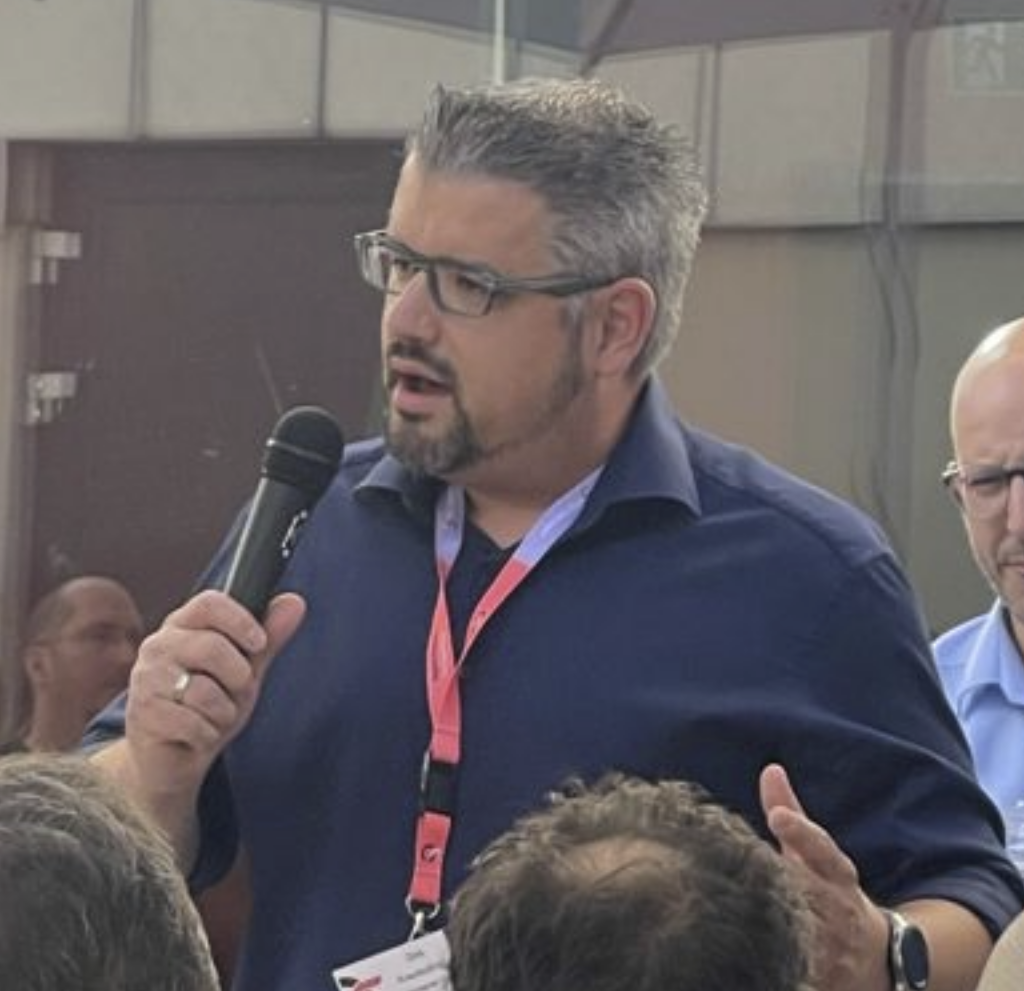
Dirk Krautschick, Aiven
Warum sich PostgreSQL-Fans auch für Kafka und Debezium interessieren sollten?
(Why PostgreSQL people should really care about Kafka and Debezium?)
Im Bereich Data Management läutete das Zusammenspiel von Postgres, Kafka und Debezium bereits eine neue Ära von Möglichkeiten ein. Dieser Vortrag soll eine Übersicht darüber bieten, warum Kafka und Debezium nicht nur als eine weitere Technologie sondern auch als ergänzendes Werkzeug für PostgreSQL Enthusiasten eine gewisse Aufmerksamkeit verdient.
Die Diskussion beginnt damit, die Stärken von Kafka als robuste Event-Streaming-Plattform und Debezium als Dreh- und Angelpunkt für die Erfassung von Änderungsdaten (CDC) darzustellen. Zusätzlich die Integration dieser Technologien erklärt, wie ihre Synergie die Datenverbreitung und -synchronisierung in Echtzeit erleichtert.
Während des gesamten Vortrags werden wir auf die Vorteile eingehen, die sich ergeben, wenn Postgres-Enthusiasten Kafka und Debezium nutzen, von der Erschließung von Datenbankänderungen bis hin zur Stärkung der Datenkonsistenz über verteilte Systeme hinweg. Praktische Einblicke und Beispiele aus der Praxis werden die potenziellen Fallstricke dieser Integration verdeutlichen, gepaart mit Strategien zur Bewältigung von den entsprechenden Herausforderungen.
Ziel dieses Vortrags ist es, aus Sicht eines PostgreSQL DBAs die symbiotische Beziehung zwischen Postgres, Kafka und Debezium als Schlüssel zur Erschließung des vollen Potenzials des eigenen Datenumfeld einfach und praxisnah vorzustellen.
Target audience: General, Level: Intermediate
Dirk Krautchick has been working as a solution architect at Aiven since November 2023. As a qualified computer scientist, he was the responsible database administrator and quality support engineer for a manufacturer of optimization software in the aviation sector for 9 years, where he built up his know-how in operating PostgreSQL or Oracle databases and application servers. In 2017 he decided to use his fascination for database technologies and his skills as a consultant in - among others - the financial and energy sector to continually deepen them. During this dynamic times, the enthusiasm and fascination for open source from the student time returned and became priority for him. Without losing the acquired Oracle database know-how PostgreSQL as a primary topic was expanded in terms of content, teams were recruited, customers were trained and targeted projects were carried out. In addition to many architectural consulting and performance tuning projects also migrations from Oracle to PostgreSQL are often the content of such projects. In order to implement the open source and PostgreSQL strategy even more aggressively, without losing focus on the technology a move technical sales in 2022 was inevitable - first as a sales engineer at EnterpriseDB and now as a solution architect at Aiven.
Slides
Picture
|
| 14:20 - 15:10 |
Josef Machytka, GIN, BTREE_GIN and BTREE indexes on JSONB data - use cases and performance tests
Josef Machytka, NetApp Deutschland GmbH
GIN, BTREE_GIN and BTREE indexes on JSONB data - use cases and performance tests
Talk summarizes several months long internal project testing usage of GIN and BTREE_GIN with different operator classes and also standard BTREE indexes on JSONB data. Tested on several real life datasets with total size of several dozens of GBs. Objective of this project was to gather relevant experience to be able to help our customers with their problems, because majority of articles on web about JSONB data in PostgreSQL show only very basic trivial examples without any reasonable value for developers solving multiple performance issues related to JSONB data.
Target audience: Developer, Level: Advanced
30+ years of experiences with different databases, PostgreSQL 10+ years
See my LinkedIn profile - https://www.linkedin.com/in/josef-machytka/
Slides
Picture
|
Andreas Geppert, Verwaltung grosser Datenbanklandschaften in Multi-Cloud-DBaaS-Umgebungen
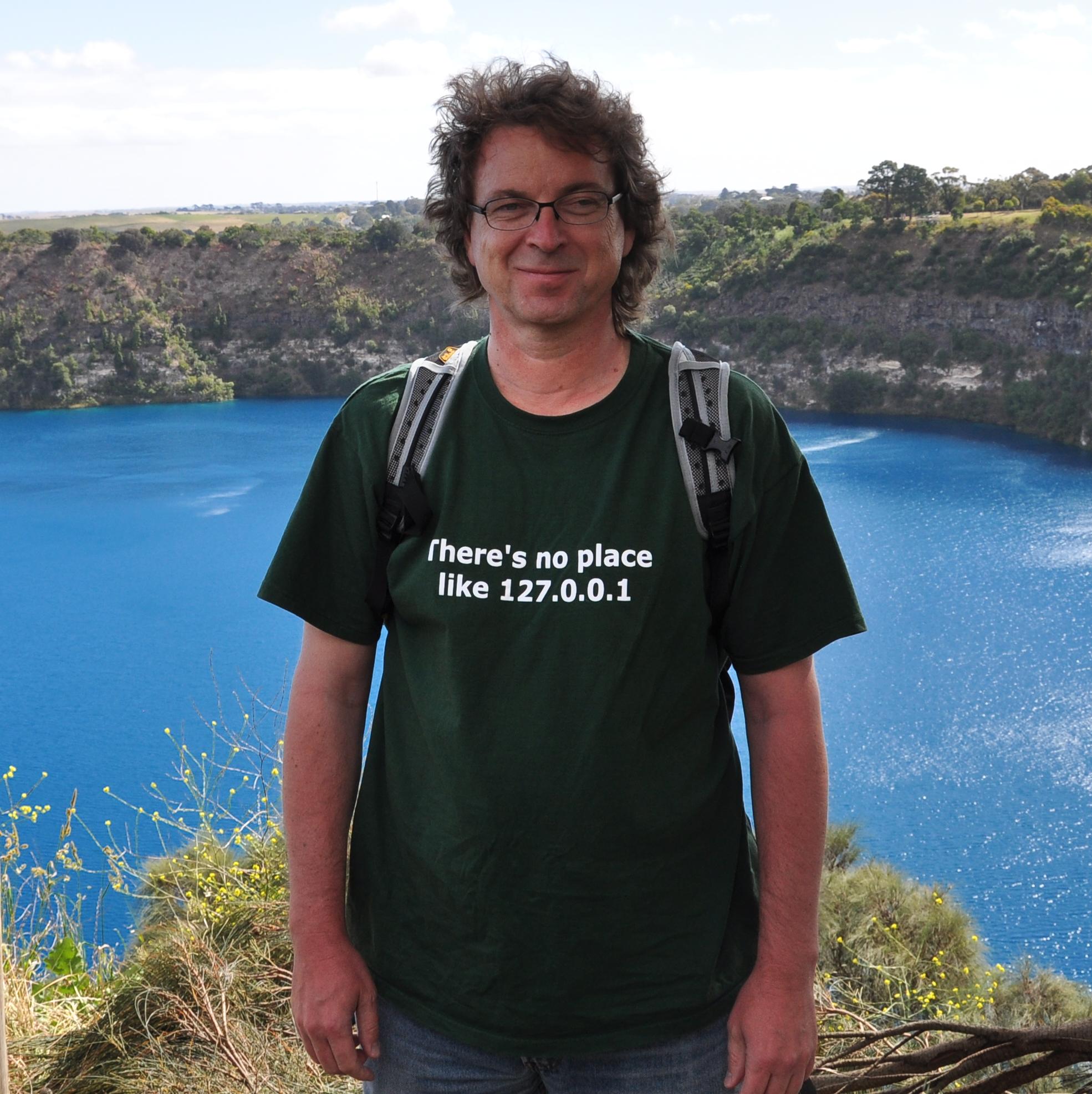
Andreas Geppert, Zürcher Kantonalbank
Verwaltung grosser Datenbanklandschaften in Multi-Cloud-DBaaS-Umgebungen
(Managing Large Database Landscapes in Multi-Cloud DBaaS Environments)
Grosse Unternehmen haben typischerweise Hunderte von Applikationen mit Datenbankkomponenten. Die Datenbanken sind oft über Clouds unterschiedlicher Anbieter und das eigene Rechenzentrum verteilt.
Datenbanken müssen in das Ökosystem der Unternehmung integriert und gemäss der Sicherheitsvorgaben gehärtet werden. Gleichzeitig sollen sie Self-Service der Benutzer und Entwickler erlauben, um deren Autonomie und Agilität zu unterstützen.
Wir zeigen, wie eine solche Multi-Cloud-fähige Database-as-a-Service-Plattform entworfen und betrieben werden kann, mit Postgres als dem hauptsächlichen Beispiel. Ausserdem schildern wir Postgres-spezifische Herausforderungen und mögliche Lösungen beim Bau solcher Plattformen.
Target audience: General, Level: Intermediate
Data platform architect and long-term Postgres user.
Slides
Picture
|
| 15:10 - 15:30 |
Break - Cafeteria in building 8 |
| 15:30 - 16:20 |
Vik Fearing, Window Functions Are Easier and More Powerful Than You Think

Vik Fearing, EDB
Window Functions Are Easier and More Powerful Than You Think
In some circles, window functions are considered "Advanced SQL". In this presentation, I will show you how easy and powerful they actually are.
We will start with the basic concept of partitions and orderings, then move on to simple frame specifications. Then we will look at more intricate frames and exclusion options, and how they can simplify quite a bit of application processing.
Finally, we will look at extensions that provide additional window functions to those defined by the SQL Standard, and take a peek at what the future might bring.
Target audience: Developer, Level: Beginner
Vik Fearing is a PostgreSQL expert at EDB, and lives in France.
He has been in the PostgreSQL community since 2008 and is the founder and co-organizer of pgDay Paris, co-organizer of PostgreSQL Conference Europe, and a volunteer and speaker at many other conferences around the world.
He is also a moderator for several of the PostgreSQL mailing lists as well as an IRC channel operator for #postgresql and #postgresqlfr.
He is an inaugural member of the PostgreSQL Code of Conduct Committee and part of the team behind the @PostgreSQL Twitter account. In his spare time, he likes to write minor patches to the PostgreSQL codebase.
Slides
Picture
|
Patrick Stählin, Wie wir einen Datenkorruptions-Bug mit der Hilfe der Community gefunden und gefixt haben

Patrick Stählin, Aiven
Wie wir einen Datenkorruptions-Bug mit der Hilfe der Community gefunden und gefixt haben
(Finding and fixing a data-corruption bug with the help of the community)
Als wir am Anfang dieses Jahres mit dem ausrollen von PostgreSQL 16 begonnen haben, sahen wir, dass ein kleiner Teil der Services (0.15%) plötzlich eine Datenkorruption anzeigten. Wir konnten das Problem zum Glück auf einen Fehler in der FSM (free space map) zurückführen. Dies lässt sich einigermassen einfach und ohne grosse Downtime beheben, braucht aber manuelle intervention. Dieser Vortrag beschreibt wie wir dank der Community den Bug gefunden, umgehen und dann fixen konnten. Wir werden uns genauer ansehen, was genau geschieht wenn PG ein Tupel auf die Disk schreiben will und was wir nun gemacht haben um den Bug zu fixen. Wir werden uns ebenfalls anschauen wie wir diese Fehler in der Zukunft ohne grosse Downtime oder mit VACUUM FULL lösen können. Dazu haben wir eine neue Funktion in pg_freespacemap vorgeschlagen.
Target audience: Beginner, Level: General
Beschäftigt sich seit 2003 mit PostgreSQL, arbeitet im PostgreSQL-Team von Aiven.
Picture
|
| 16:30 - 17:20 |
Pavlo Golub, When it all GOes right

Pavlo Golub, CYBERTEC
When it all GOes right
This talk covers how to use PostgreSQL together with the Golang (Go) programming language. I will describe what drivers and tools are available and which to use nowadays.
In this talk I will cover what design choices of Go can help you to build robust programs. But also, we will reveal some parts of the language and drivers that can cause obstacles and what routines to apply to avoid risks.
We will try to build the simplest cross-platform application in Go fully covered by tests and ready for CI/CD using GitHub Actions as an example
Target audience: Developer, Level: Beginner
I am a PostgreSQL contributor and co-organizer of PostgreSQL Ukraine User Group, as well as Senior Developer and Expert at Cybertec. I am the author of pgxmock library and scheduling solution for PostgreSQL written in Go called pg_timetable. Also I am a maintainer of pgwatch2 monitoring solution.
Slides
Picture
|
Marion Baumgartner, Geodaten-Management mit PostGIS
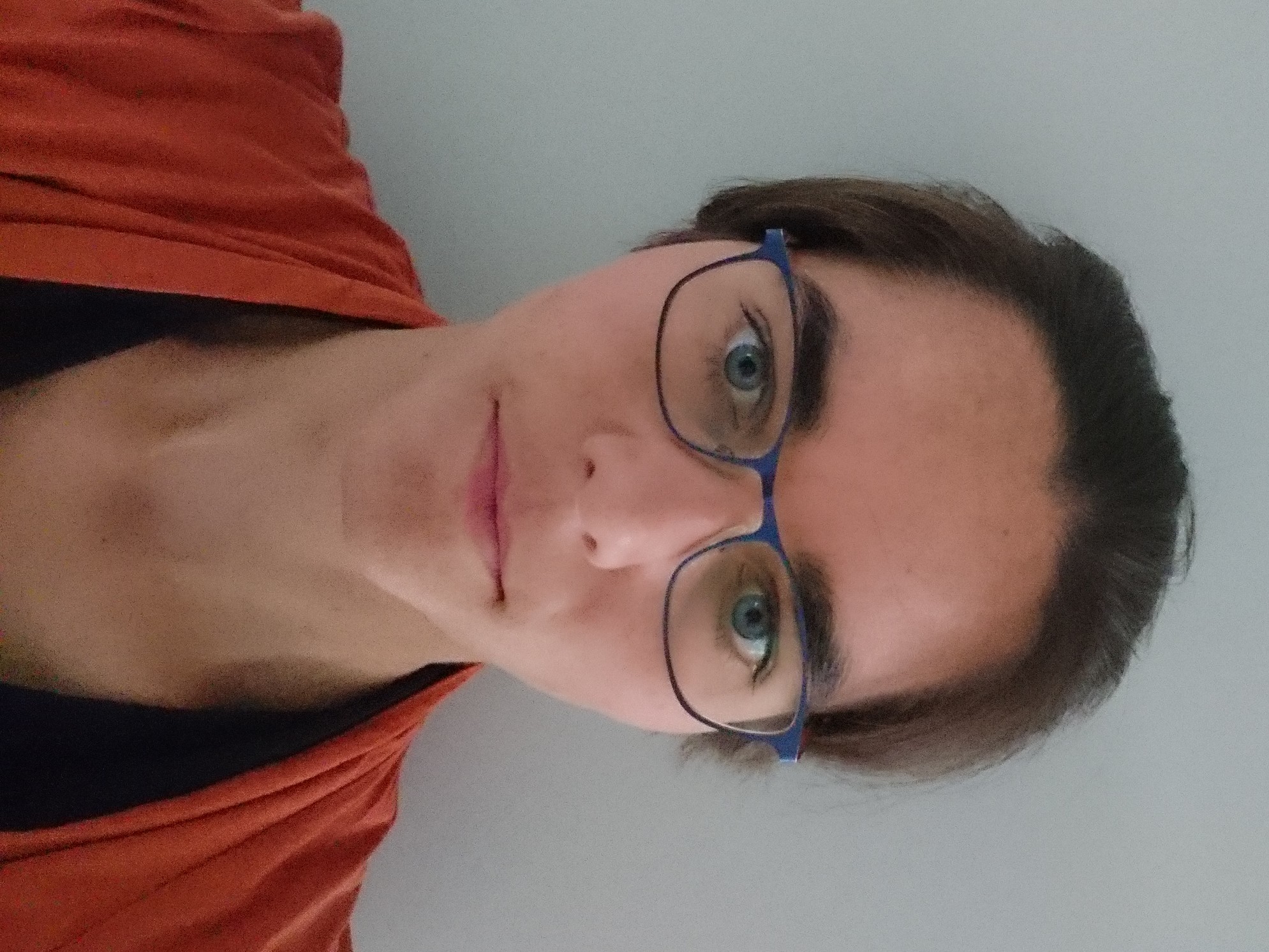
Marion Baumgartner, Camptocamp SA
Geodaten-Management mit PostGIS
(Organizing Spatial Data with PostGIS)
In der Welt der Geographischen Informationssysteme (GIS) wird die PostgreSQL-Datenbank in Kombination mit PostGIS häufig zur Speicherung räumlicher Daten verwendet. Die PostGIS-Erweiterung, die in den letzten 23 Jahren von einer grossen wachsenden Gemeinschaft gepflegt und erweitert wurde, macht PostgreSQL zu einer räumlichen Datenbank. Im Wesentlichen ermöglicht PostGIS räumliche Daten in PostgreSQL zu speichern und zu nutzen.
Dieser Vortrag beschäftigt sich mit dem zentralen Teil, für den PostGIS verwendet wird: die Geodaten. Wir werden unterschiedliche Möglichkeiten aufzeigen, um räumliche Daten in einer performanten Art und Weise mit PostGIS zu speichern. Eine wichtige Rolle spielt hierbei sowohl die effiziente Organisation über das Datenmodell, als auch die Verfügbarkeit für Datenexporte und Datenabfragen von häufig verwendeten GIS-Clients (z.B. QGIS oder MapServer).
Anhand eines grossen laufenden Projektes des Schweizer Bundesamtes für Landestopografie (Swisstopo) werden wir verschiedene gängige Datenmodelle illustrieren und deren Vor- und Nachteile diskutieren. Einige dieser Beispiele bestehen aus sehr komplexen Datensätzen mit einer großen Anzahl an geographischen Objekten. Die Art, wie die Daten gespeichert werden, ist insbesondere für eine performante Visualisierung entscheidend, was wir an dem Beispiel der nationalen Geodateninfrastruktur map.geo.admin.ch zeigen werden.
Target audience: General, Level: Beginner
I am a software developer and work for the company Camptocamp, developing GIS open source software. Besides development, I do a lot of data integration with geo-spacial data where PostgreSQL and PostGIS are my good companions.
Slides
Picture
|
| 18:30 - |
Social Event - Bottéga Rapperswil, 18:00 open, 18:45 start of the event
|
| Friday, 28.06.2024 |
| Time |
Room 3.008 |
Room 3.010 |
| 08:30 - 09:00 |
Registration / Coffee - Cafeteria in building 8 |
| 09:00 - 09:40 |
Keynote: Stefan Keller, PostgreSQL: A Reliable and Extensible Multi-Model SQL Database - Room 3.008

Stefan Keller, OST Ostschweizer Fachhochschule
PostgreSQL: A Reliable and Extensible Multi-Model SQL Database
The term "multi-model" often refers to the use of specialized "purpose-built" NoSQL databases designed for specific data models. However, the "general-purpose" database PostgreSQL challenges this notion by integrating a wide range of NoSQL features into its SQL-based system, making it a versatile multi-model database. This talk will explore PostgreSQL's ability to handle a variety of NoSQL data types, including arrays, key-values, documents (including XML and JSON), and graph data types. This talk will highlight PostgreSQL's suitability as a unified platform for diverse data management, combining the flexibility of NoSQL with the robustness of a fully transactional relational database.
Target audience: General, Level: Intermediate
Stefan Keller is Full Professor and Head of the Institute for Software at the OST Campus Rapperswil, as well as member of the program committee of the Swiss PGDay.
Slides
Picture
|
| 09:40 - 10:00 |
Break - Cafeteria in building 8 |
| 10:00 - 10:50 |
Matt Cornillon, How I found my Pokémon cards thanks to Postgres: an AI journey

Matt Cornillon, Aiven
How I found my Pokémon cards thanks to Postgres: an AI journey
When it comes to data storage and retrieval, PostgreSQL offers more than just traditional tabular data management. This session explores the exciting potential of combining PostgreSQL with AI technologies, illustrated through a relatable example—finding and identifying specific Pokémon cards. While Pokémon cards serve as a fun and engaging example, the techniques presented have wide applications in various data-driven domains such as object detection and autonomous driving.
We'll begin with an overview of the machine learning pipeline for image recognition where we’ll discuss how a Convolutional Neural Network (CNN) can be trained to recognize Pokémon cards, generating embeddings that capture essential visual features.
Our main focus will be on pgvector, an extension for PostgreSQL dedicated for managing vector data like embeddings efficiently. We will cover how to store such embeddings, set up indexes for quick retrieval, and conduct similarity searches right within your PostgreSQL database, and at scale!
If you're intrigued by the integration of AI with PostgreSQL for real-time, high-performance data operations, this session will offer both theory and hands-on practices to get you started.
Target audience: Developer, Level: Intermediate
Passionate about databases for as long as I can remember, Postgres and Open Source hold a special place in my heart.
After spending 10 years working in large retail companies as a database engineer, I now support developers and DBAs who choose Open Source with Aiven.
Picture
|
Luigi Nardi, Lesson learned from autotuning PostgreSQL
Luigi Nardi, DBtune
Lesson learned from autotuning PostgreSQL
We'll explore the intricate world of PostgreSQL parameter tuning, where the database management system reveals a multitude of configurable parameters that govern its runtime behavior. As the system evolves, the increasing number, the non-linear relationship and the complexity of these parameters highlight the importance of their correct configuration in optimizing application performance and cloud resource utilization.
This talk delves into various tuning approaches. We'll start with the traditional, meticulous method of manual tuning, relying on expert analysis of metrics like query response times and resource usage. We'll then explore heuristic-based tools like PGTune and PostgreSQL Configurator, offering one-size-fits-all solutions. Finally, we'll set our sights on the future: auto-tuning with machine learning. We'll showcase how these more sophisticated methods can be customized to a specific workload and machine resources.
We'll highlight the challenges and the advantages of transforming PostgreSQL into a more self-driving database management system. We'll share valuable lessons learned while developing DBtune, a machine-learning-powered optimization service designed to unlock the full potential of your PostgreSQL instance.
Target audience: Developer, Level: Intermediate
Luigi Nardi is the founder and CEO of DBtune (www.dbtune.com), a leading company driving advancements in AI, database systems, and cloud computing. Previously an associate professor of machine learning at Lund University and a research staff at Stanford University, Luigi's expertise centers around black-box optimization theory and practice. Luigi's journey includes a post-doctoral position at Imperial College London and a role as a software engineer at Murex S.A.S., following his Ph.D. program in applied mathematics at Université Pierre et Marie Curie in Paris in 2011.
Slides
Picture
|
| 11:00 - 11:50 |
Kranthi Kiran Burada, Selective Column Replication in PostgreSQL

Kranthi Kiran Burada, Amazon Web Services
Selective Column Replication in PostgreSQL
Database replication is fundamental for ensuring data availability, scalability, and disaster recovery in modern distributed systems. PostgreSQL, a widely-used open-source relational database management system, offers diverse replication methods for synchronizing data across multiple nodes. This session delves into selective column replication, a technique enabling the replication of specific table columns rather than the entire table, within PostgreSQL.
Exploring the rationale behind selective column replication, we examine its benefits, challenges, and implementation strategies within the PostgreSQL ecosystem. This includes discussions on enhancing database performance, reducing network bandwidth consumption, and facilitating efficient data synchronization in complex distributed environments.
Furthermore, practical use cases are analyzed to demonstrate the significant advantages of selective column replication. By focusing on performance optimization, we aim to offer insights into leveraging this technique as a powerful tool for refining PostgreSQL database replication strategies.
With a comprehensive exploration, this session aims to contribute to the understanding and utilization of selective column replication, providing valuable guidance for database administrators and developers seeking to optimize their PostgreSQL deployments.
Target audience: DBA, Level: Intermediate
My name is Kranthi Kiran Burada, and I've been serving as a Database Migration Specialist at AWS for the past 6 years, accumulating a total of 11 years of experience in the field. My primary focus lies in assisting customers with migrating from commercial databases to open-source databases like PostgreSQL.
Over the last 8 years, I've been deeply involved with PostgreSQL, aiding clients in performance optimization, database design, troubleshooting, and offering best practices during migrations from Oracle/SQL Server to PostgreSQL.
Additionally, I have the privilege of being an AWS Certification Subject Matter Expert (SME), contributing to the development of all AWS associate certifications and the AWS Database Specialty Certification.
Beyond my professional endeavours, I'm passionate about exploring new destinations and indulging in games like badminton and cricket during my leisure time.
Slides
Picture
|
Franck Pachot, Indexing Beyond Columns: Expressions, Text Fragments, JSON Attributes, and Top-N Queries

Franck Pachot, Yugabyte
Indexing Beyond Columns: Expressions, Text Fragments, JSON Attributes, and Top-N Queries
If you create your indexes by looking at the columns of the tables, it's time to explore a different approach. Instead of simply indexing one or more columns that seem useful for queries, look at the values and ranges of values you will be searching for, and in what order you want to sort the result. While in a heavily normalized schema, this typically translates to one or more columns, modern applications often require searching criteria within a fragment of text, an attribute in a JSON structure, or maximum values across multiple rows. In this session, we will explore several examples (Expressions, text fragments, JSON attributes, and Top-N queries) on PostgreSQL (Expression index, Inverted index, Partial index, Covering index, Order preserving joins) and evaluate the efficiency of indexing by examining the execution plan.
Target audience: General, Level: Beginner
Developer Advocate for YugabyteDB, distributed SQL database using PostgreSQL query layer. Franck has a passion for learning and sharing in blog posts (blog.pachot.net), articles, conferences, twitter (@FranckPachot) and tech communities (AWS Data Hero and Oracle ACE Director)
Slides
Picture
|
| 11:50 - 13:00 |
Lunch - Mensa in building 4 |
| 13:00 - 13:50 |
Kanhaiya Lal, Belma Canik, Beyond Keywords: AI-powered Text Search with pgvector for PostgreSQL
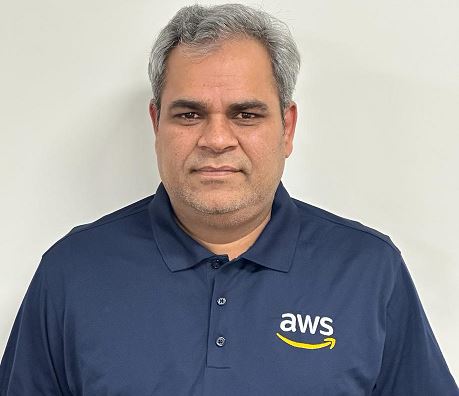
Kanhaiya Lal, Belma Canik, Amazon Web Services
Beyond Keywords: AI-powered Text Search with pgvector for PostgreSQL
Current search algorithms struggle with huge and complex datasets. This talk delves into a revolutionary approach: semantic search with pgvector for PostgreSQL. pgvector makes use of vector embeddings, which capture the meaning behind words rather than their exact presence. This allows searches to comprehend the purpose of your query, producing more relevant results. I'll look at why PostgreSQL, along with pgvector, is an effective foundation for developing next-generation search engines. You'll also learn how to develop these semantic representations and combine them with PostgreSQL to provide a really transformational search experience.
Target audience: General, Level: Advanced
Kanhaiya Lal: I am Kanhaiya Lal, a Senior Specialist Database - Technical Account Manager at Amazon Web Services (AWS) with 19 years of experience in open-source and commercial databases. Kanhaiya Lal is an AWS Certified Speaker who has given multiple public talks about open-source databases. Kanhaiya Lal enjoys developing PostgreSQL apps that make use of all of PostgreSQL's great capabilities. Kanhaiya Lal worked on mission-critical platforms utilizing various PostgreSQL versions. Kanhaiya Lal is a PostgreSQL architect specializing in autovacuum, streaming, performance optimization, workload deep-dive, and providing recommendations.
Picture
|
Daniel Westermann, PostgreSQL 17 highlight: In-core inkrementelle Backups, Backup Ketten und einen Haufen Details

Daniel Westermann, dbi services
PostgreSQL 17 highlight: In-core inkrementelle Backups, Backup Ketten und einen Haufen Details
Von Vielen schon lange gewünscht: Ab Version 17 wird PostgreSQL aller Wahrscheinlichkeit nach in der Lage sein, inkrementelle Backups zu erstellen, und diese natürlich auch wieder hierzustellen. In diesem Vortrag werden wir uns ansehen, wie inkrementelle Backups funktionieren, was es mit Backup Ketten auf sich hat und wie sich das in einem Backup-Konzept zusammenfügen liesse. Das werden wir uns alles auf der Konsole mit Bespielen erarbeiten, ohne Folien. Natürlich wird es aber einen Foliensatz geben, der das alles Schritt für Schritt erklärt, damit es dann von jedem nachvollzogen werden kann.
Target audience: DBA, Level: Beginner
Daniel Westermann is Principal Consultant and Technology Leader Open Infrastructure at dbi services. He has more than 15 years of experience in management, engineering and optimization of databases and infrastructures, especially on PostgreSQL. Since the beginning of his career, he has specialized in Oracle Technologies and is Oracle Certified Professional 12c and Oracle Certified Expert RAC/GridInfra. Over time, Daniel has become increasingly interested in open source technologies, becoming “Technology Leader Open Infrastructure” and PostgreSQL expert. Based on community or EnterpriseDB tools, he develops and installs complex high available solutions with PostgreSQL. He is a regular speaker at PostgreSQL conferences in Switzerland and Europe. Today Daniel is also supporting our customers on AWS services such as AWS RDS, database migrations into the cloud, EC2 and automated infrastructure management with AWS SSM (System Manager). He is a certified AWS Solutions Architect Professional. Prior to dbi services, Daniel was Management System Engineer at LC SYSTEMS-Engineering AG in Basel. Before that, he worked as Oracle Developper & Project Manager at Delta Energy Solutions AG in Basel (today Powel AG). Daniel holds a diploma in Business Informatics (DHBW, Germany). His branch-related experience mainly covers the pharma industry, the financial sector, energy, lottery and telecommunications.
Slides
Picture
|
| 14:00 - 14:50 |
Gabriele Bartolini, Unleashing the Power of PostgreSQL in Kubernetes
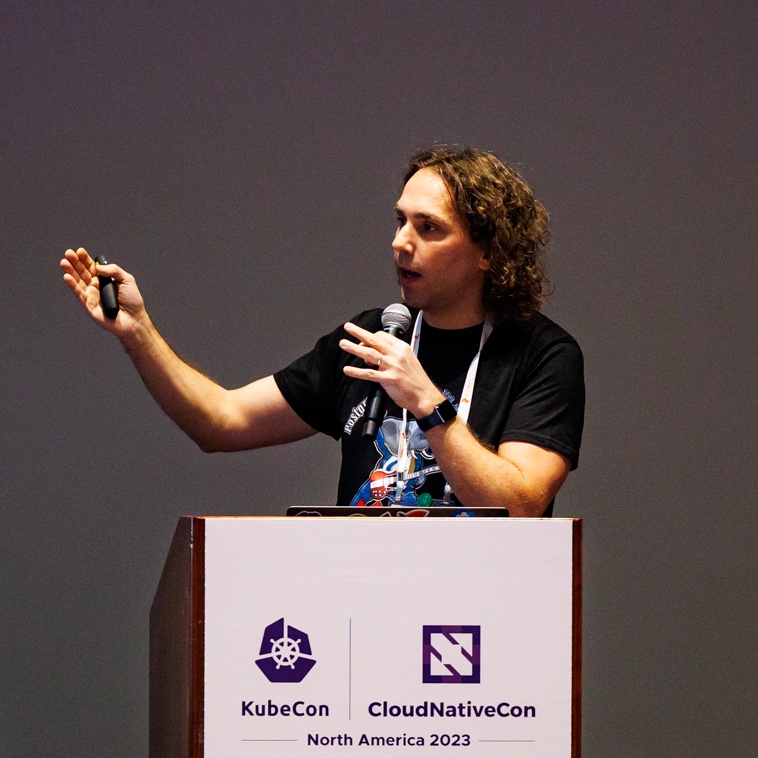
Gabriele Bartolini, EDB
Unleashing the Power of PostgreSQL in Kubernetes
In a landscape where Database Administrators (DBAs) often find themselves compelled to adopt Kubernetes with little - if any - involvement in the decision-making process, the integration of PostgreSQL databases into these environments becomes a pivotal concern.
This presentation will delve into the challenges faced by DBAs in this scenario and offer practical solutions, focusing on CloudNativePG, the rapidly expanding open-source operator for Postgres workloads, originally developed by EDB and now thriving under the governance of a vendor-neutral community.
Join me, a co-founder and maintainer of CloudNativePG, on an enlightening journey through a comprehensive demonstration. We'll explore every facet of deploying Postgres within Kubernetes, addressing key aspects ranging from the initial setup to simulating failover scenarios.
This session aims to empower DBAs with practical insights into seamlessly integrating PostgreSQL with Kubernetes and navigating the challenges imposed by external management decisions.
Additionally, it will shed light on how CloudNativePG, in collaboration with Kubernetes, reshapes and elevates the role of the DBA.
By leveraging a fully open-source stack comprising Kubernetes, PostgreSQL, and CloudNativePG, attendees will gain a profound understanding of the transformative impact on their daily responsibilities and the overall efficiency of database management within Cloud Native environments. This represents a unique opportunity for DBAs to proactively engage and contribute to the decision-making processes surrounding database technology in the Cloud Native era.
Target audience: General, Level: Intermediate
Gabriele, an open-source programmer and entrepreneur with a Statistics degree from the University of Florence, has been contributing to PostgreSQL since the early 2000s. A key figure in fostering lean and DevOps culture at 2ndQuadrant, he now leads the Cloud Native initiative at EDB. Gabriele is a co-founder of CloudNativePG and Barman open-source projects, showcasing his dedication to advancing technology and collaborative development.
Slides
Picture
|
Kai Wagner, Verschlossen und gesichert: PostgreSQL-Verschlüsselung entmystifiziert

Kai Wagner, Percona
Verschlossen und gesichert: PostgreSQL-Verschlüsselung entmystifiziert
(Locked & Secured: PostgreSQL Encryption Demystified)
Verschlüsselung und somit Sicherheit von Daten ist heutzutage wichtiger denn je. In PostgreSQL selbst, habe ich nur limitierte Optionen. Doch welche Möglichkeiten habe ich PostgreSQL zu verschlüsseln? Es gibt verschiedene Techniken von Secure Sockets Layer (SSL) und Transport Layer Security (TLS), für Client Anwendungen, bis zu Transparent Data Encryption (TDE) bei der die Daten verschlüsselt gespeichert werden.
Du willst lernen, wie TDE deine gespeicherten Daten in eine unlesbare Form verwandelt, es sei denn, du hast die richtigen Schlüssel? Dich interessiert ebenfalls wie SSL/TLS deine Daten während der Übertragung schützt und unbefugten Zugriff verhindert? Dann ist dieser Talk genau der richtige für dich.
Getreu meinem Motto:"Encryption is not a crime"
Target audience: General, Level: Beginner
I'm Kai, and I work as a Sr. Engineering Manager for PostgreSQL at Percona. I'm passionate about open source, free speech, and transparent communication. Actively engaged and a public speaker for many open source projects such as ceph, openATTIC, Linux Kernel and now PostgreSQL. Whenever I'm not sitting in front of my computer, I either spend time with the family or work on our house.
|
| 14:50 - 15:20 |
Break & Poster Presentation - Cafeteria in building 8
During the coffee break, you will find the authors next to their posters to discuss the topics illustrated.
- Andrea Minetti, Box Framework Poster
- Stefan Keller, DuckDB and PostgreSQL Poster
- Stefan Keller, 5 Things You Wouldn't Have Thought Databases Could Do! Poster
- Stefan Keller, PostgreSQL & Pivot Poster
|
| 15:20 - 16:10 |
Lightning Talks: Possibly you - Room 3.008
Lightning Talks
Moderation:Vik Fearing
In this session, several people are given the opportunity to give a short presentation of a few minutes. These can be on any topic, including PostgreSQL, but excluding commercial advertising. We are happy to hear about new ideas,
work in progress, calls for papers, or notices of upcoming changes.
If you would like to participate, please add your name to list at the registration desk. If you want to present slides, these need to be mailed as a PDF to info@pgday.ch before 14:00.
- Johannes Graën, Pattern matching in the Unicode space
- Franck Pachot, YUGABYTEDB: A Postgres fork to scale horizontally
- Kai Wagner, TDE is coming in…
- Gianni Ciolli, The Well-Tempered Elephant
- Andreas Gruhler, PostgreSQL in the snow - send the right athletes to the finals
- Pavlo Golub, A Song of Ice and Fire
- Josef Machytka, Can PostgreSQL have a more prominent role in AI boom?
- Dickson Guedes, Visualizing Postgres buffers
Slides
|
| 16:10 - 16:30 |
Closing: Stefan Keller (OST) - Room 3.008

Stefan Keller
Professor for information systems, founder and head of Geometa Labs. Keller is a member of the Swiss PGDay board and involved in various open source projects such as PostGIS and QGIS and open data initiatives, e.g. OpenStreetMap. Besides, he is generally interested in geographic data and their visualization as well as in the the integration of open source and proprietary solutions (e.g. QGIS and ArcGIS).
Professor für Informationssysteme sowie Leiter und Gründer des Geometa Labs. Ist u.a. Mitglied des Swiss PGDay OK und engagiert in verschiedenen Open Source Projekten (z.B. PostGIS und QGIS) und Open Data (v.a. OpenStreetMap). Zudem interessieren ihn allgemein Geodaten und Geovisualisierung sowie die Integration von Open Source und proprietärer Software (z.B. QGIS und ArcGIS).
Slides
Sponsors
Speakers
|
 The Swiss PGDay is organized by the
Swiss PostgreSQL Users Group (SwissPUG)
The Swiss PGDay is organized by the
Swiss PostgreSQL Users Group (SwissPUG)

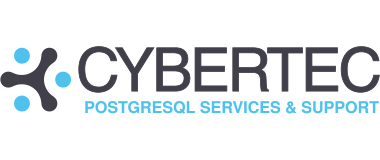
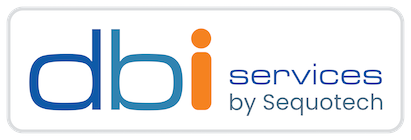























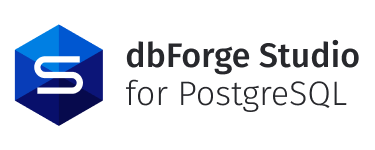
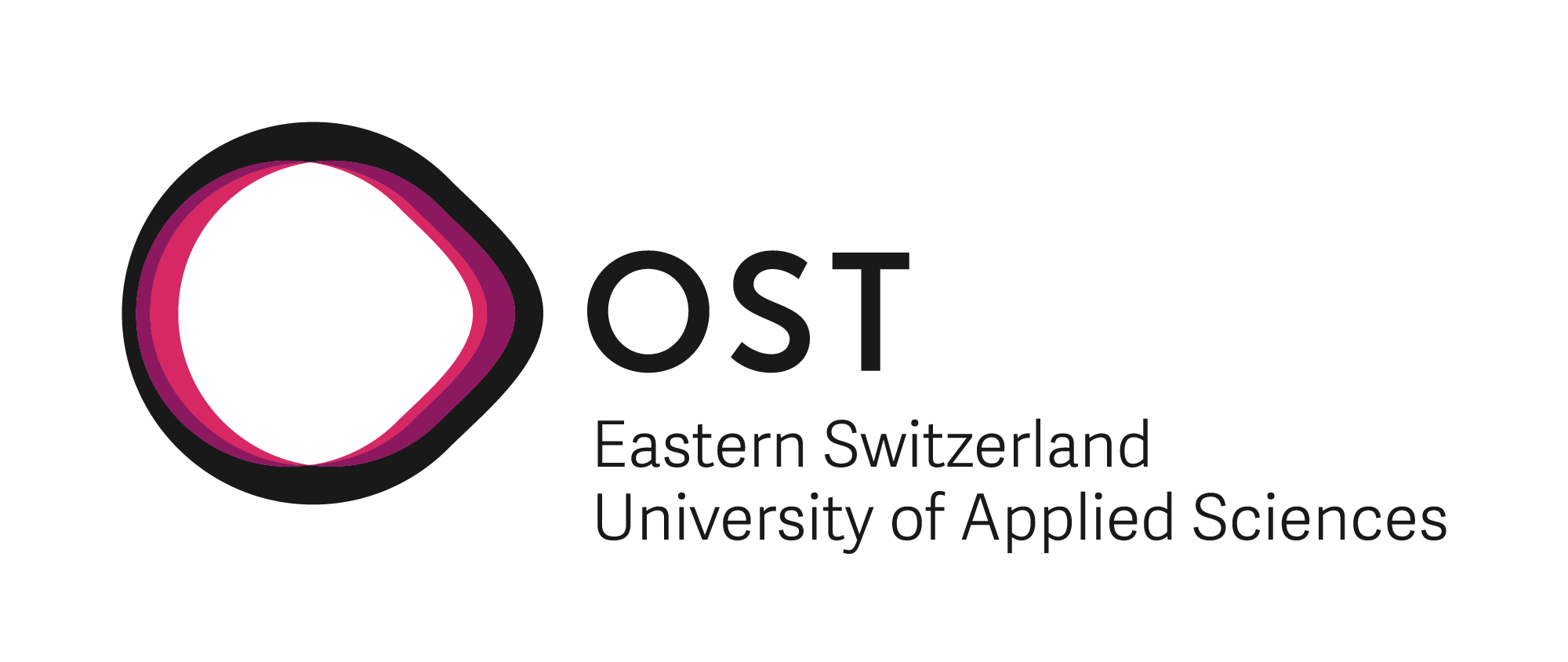
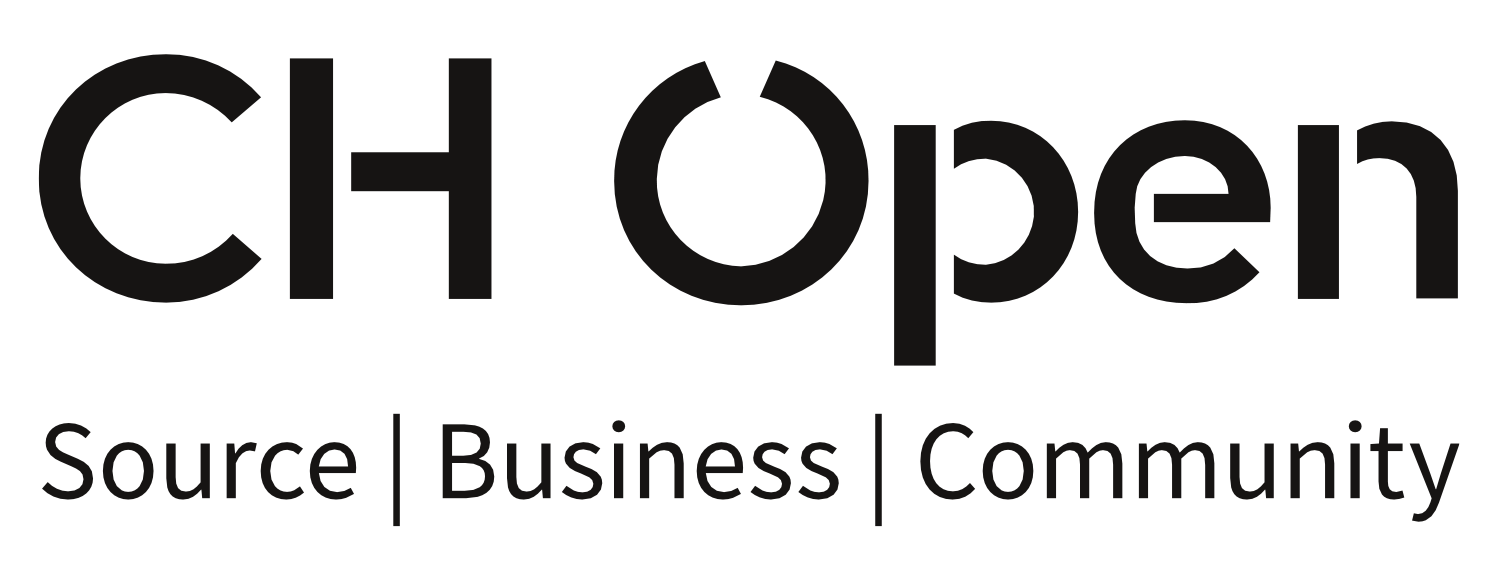


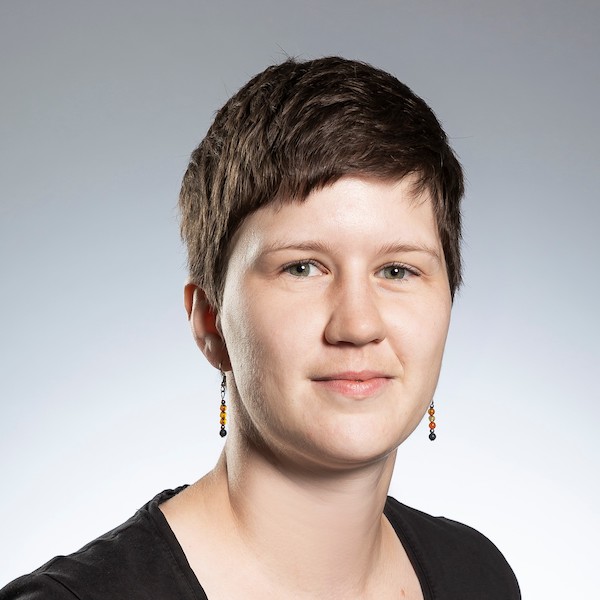


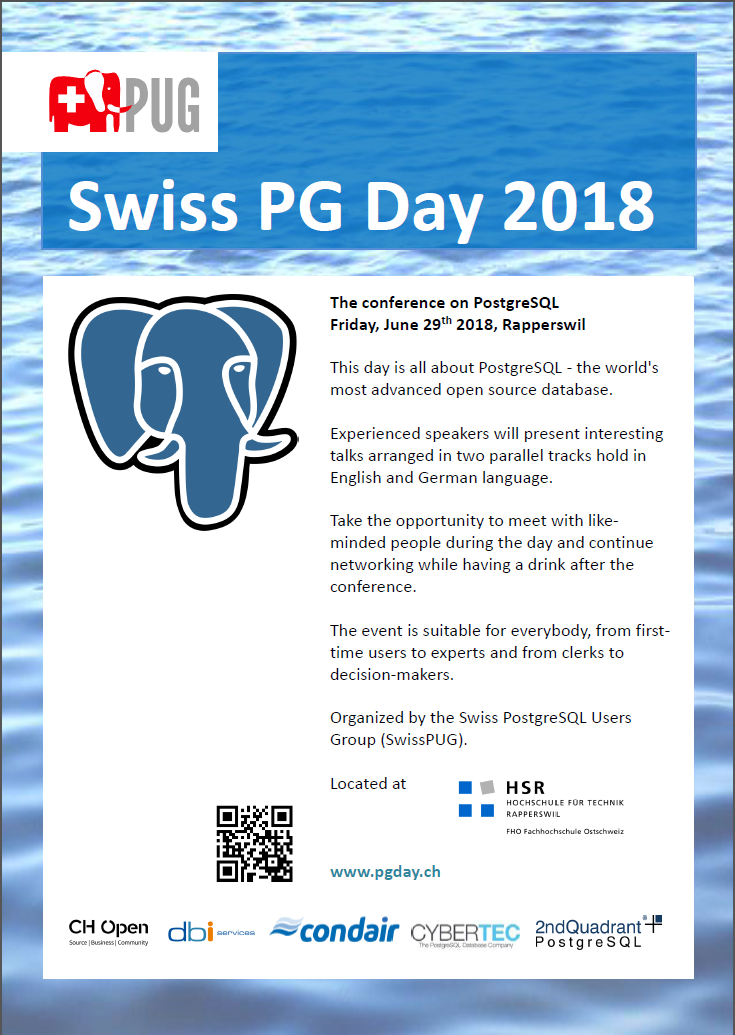
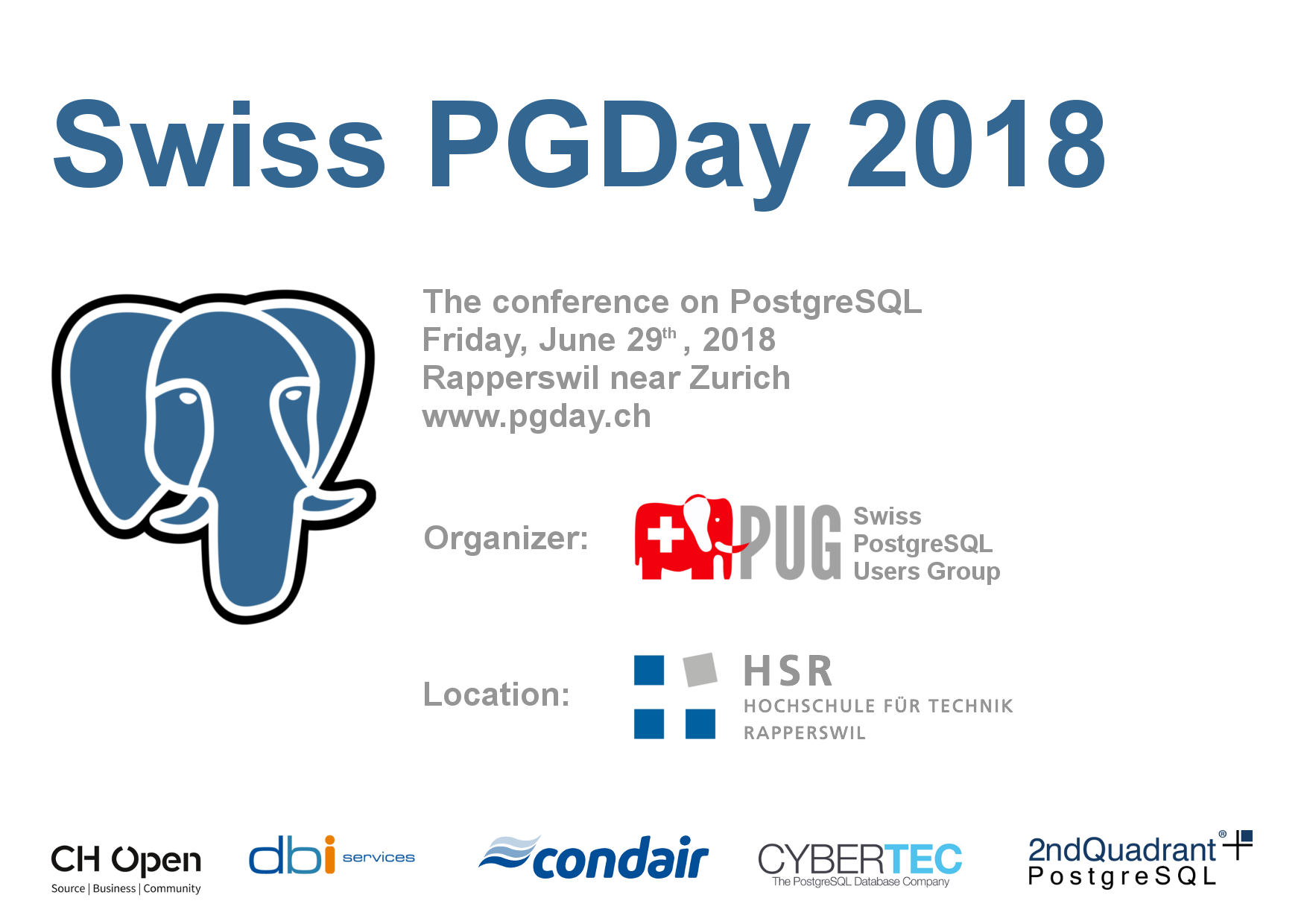
Social Event
On Thursday evening, 27 June 2024, all participants of the Swiss PGDay are invited to the social event at Club Bottéga. Here you can network and exchange ideas in an informal setting. Club Bottéga opens for us at 18:00. The buffet will be opened at 18:45. The cost for food, non-alcoholic drinks and beer will be covered by Swiss PGDay. To simplify logistics, please bring the voucher you receive at conference check-in and wear your name tag.
Coming from the conference venue, you will reach Club Bottéga at Neue Jonastrasse 72 after a 10-minute walk: Map